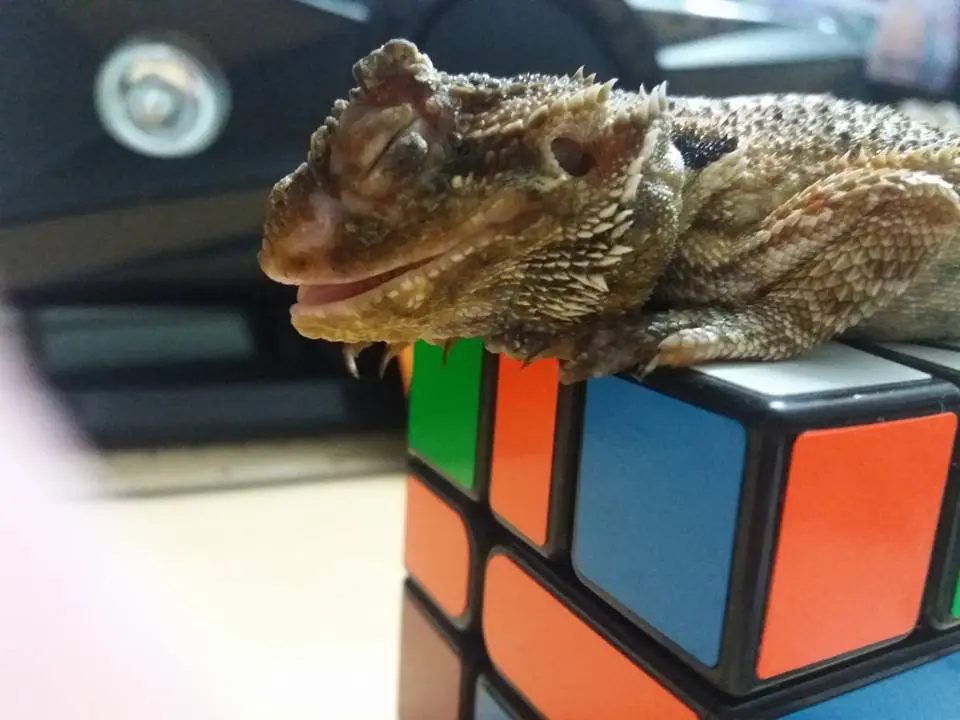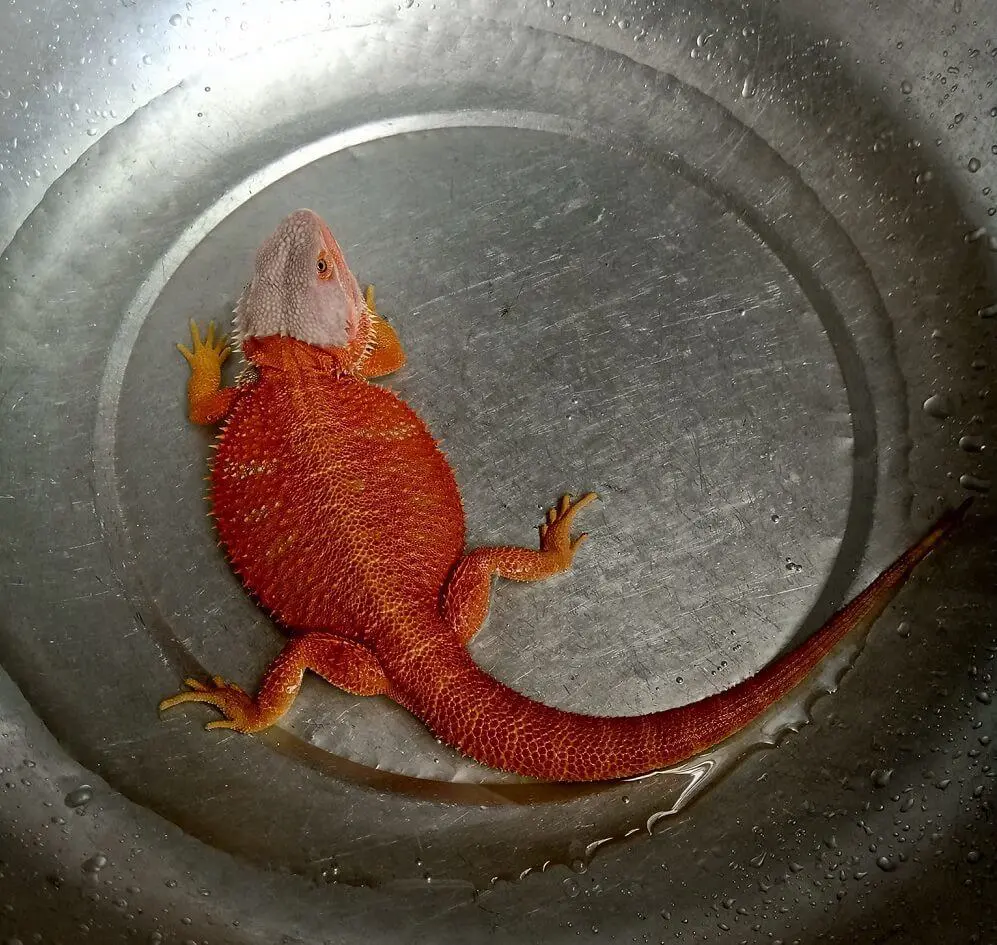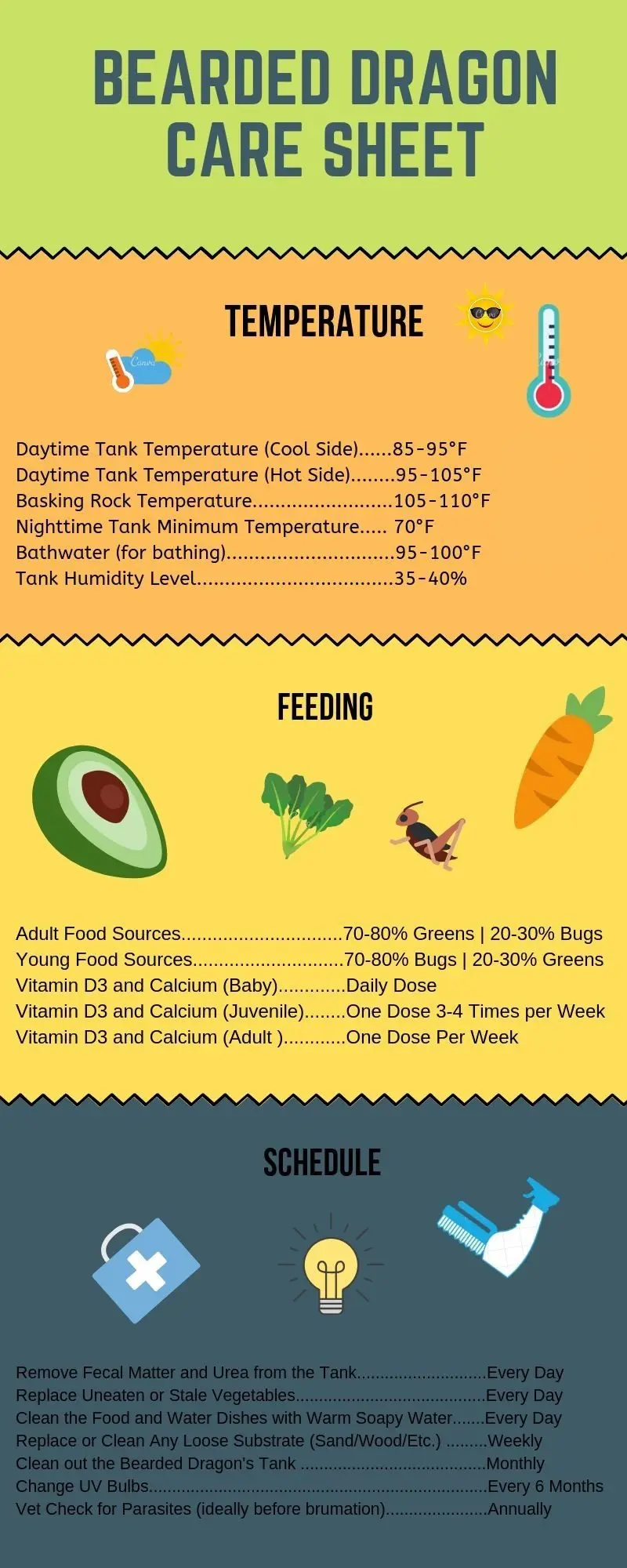Bearded dragons require long term care and can live up to fifteen years in captivity. Native to Australia, these lizards have very specific care and housing requirements to keep them healthy and fit.
As a bearded dragon owner, it’s important to know that eye infections are relatively common in these reptilians.
Knowing the symptoms, causes, and how to treat the infection can ensure your dragon enjoys a healthy and happy life moving forward.
Table of Contents
Bearded Dragon Eye Infection Symptoms
There are a number of different symptoms that you need to keep an eye out for when it comes to an eye infection in your bearded dragon, these include:
- Eyes remain closed
- Eyes are crusted, making it difficult for the lizard to open its eyes
- Eyes have discharge, a sign that infection is present
- Eyes remain swollen

Causes of Eye Infection in Bearded Dragons
When it comes to causes of an eye infection in your bearded dragon, there are numerous causes. Identifying the cause can help prevent the risk of eye infection in the future.
Vitamin A Deficiency
Vitamin A deficiency is very common in bearded dragons. They are omnivorous, eating insects and leafy greens.
They often suffer from vitamin deficiency, which can result in an eye infection.
The infection (Hypovitaminosis A) is easily cured with vitamin A supplements. Carrots, corn, peas, and a supplement should assist your dragons eyes to heal.
Substrate
The substrate selection you make to cover the bottom of your bearded dragon’s enclosure is an important one.
The wrong material on the bottom of the enclosure and your dragon could be fighting a nasty eye infection.
Many substrates have loose particles which can get into the eye, irritating it and resulting in infection.
Mites
It’s not uncommon for dragons to get mites. You need to inspect the eye closely to see if you can see any small red or black dots around the eye, which could be mites.
This can result in crusty eyes, discharge, and pus around the eyes. When you see eye discharge, your first concern must be an eye infection.
Bearded Dragon Eye Infection Treatments
An eye infection is not something to ignore in your bearded dragon.
If your dragon is showing signs of an eye infection, you are going to want to get your dragon to the vet as soon as possible, ensuring speedy treatment and the reduced risk of serious or permanent damage to the eye.
Warm Bath

While waiting for a vet appointment, you can give your bearded dragon a warm soak and dry and gently wash any crusting or discharge from the eye.
This will help to open the eye and relieve some of the discomforts in the meantime.
Eye Drops
Your vet will most likely prescribe eye drops which should be used as prescribed to treat your bearded dragon’s eye infection.
Of course, eye drops won’t work on their own. You will need to find the root cause of the problem, such as diet or substrate that may be putting your dragon at risk.
Prevention
Prevention is always better than cure in any situation and the same applies to your bearded dragon.
Substrate
If you are currently using a particle filled substrate, such as eco earth, you may want to change to ceramic tile, reptile carpet, or shelf liner which will reduce the risk of something getting into your dragon’s eye.
It will also help reduce the risk of impaction, another problem common in bearded dragons.
Lighting
Bearded dragons come from Australia, where they are used to spending their days basking in the sun and soaking up the UV rays from the sun, which helps to keep them fit and healthy.
When living in captivity, you are going to want to provide UV lighting to reduce the risk of eye infection and help keep your dragon strong and healthy in the future.
Temperature

If you don’t keep the enclosure temperatures at optimum, your dragon is not going to be strong enough to fight off infections, such as an eye infection.
Day time temperatures should be kept at between 75ºF and 85ºF with basking temperatures reaching 88ºF and 100ºF. At night temperatures can drop to as low as 70ºF.
Diet
Maintaining a healthy and varied diet as per your dragon’s health needs will ensure that their immune system is strong enough to fight off infection.
Vitamin A can be absorbed through eating a varied diet which includes carrots and peas.
Ensure you gut load your crickets before feeding using good quality multi vitamins to keep your reptile pet happy and strong in the long run.

I need help with my bearded dragon. I think something is wrong with his eye. I notice like green looking boogers forming in between his eyelid and every time it pops out another one forms I don’t know if this is very dangerous for him and what I can do to help.
Everett, I have the same thing going on with my bearded dragon. What did you do to help him? Did you find out?
We just got a Bearded dragon from someone today that let it run loose in there basment….yes very sad. But his one eye won’t open I’m guessing due to lack of nutrition and we and working on getting this little guy all the vitamins and stuff he needs but is there anything else we can do do help him get healthier